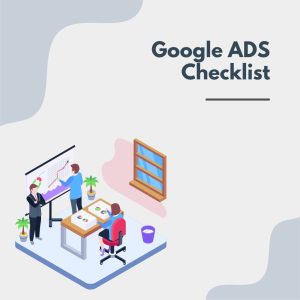
We explain how the cost of contextual advertising is determined. There is no universal calculator here: many variables, the accuracy of which constantly changes. However, the list of these variables and ways to influence them is known.
The more accurately these parameters are set, the cheaper it will be for the advertiser to attract each potential customer.
How is the cost of contextual advertising calculated?
The total price consists of the cost of the specialist’s work (the cost of setting up and managing contextual advertising) and the advertising budget (the money you pay Google for impressions).
Services for contextual advertising that you can order from us at FADS.
The volume of the advertising budget depends on many parameters — from the global work of algorithms to correct timing and geotargeting. Let’s break it down in more detail.
What does the cost of contextual advertising depend on?
But who becomes your competitors in the search and what determines the minimum bid size? These factors can be divided into two large groups: competition intensity and ad quality.
Competition in contextual advertising
The most aggressive competition, the highest bids, and the most expensive clicks are in those types of businesses where:
- there are many market players with no obvious and significant differences for the customer
- expensive goods with a complex decision-making process
- few customers in general, and the market is not growing
Moreover, these factors do not affect globally but only within geotargeting: in each region, the situation is different, and the cost per click for one company can vary significantly in different regions. This is precisely why specialists usually insist on breaking down the national campaign into separate ones for each region.
Additional factors affecting competition
Seasonality. It is essential to understand that the intensity of competition is not a static indicator; it changes over time. Seasonal sales affect the average cost per click most directly: prices soar during the “high season.”
Placement locations. The strategy for choosing locations for search advertising is indirectly related to competition. A careful analysis of the target audience helps choose display locations where the ratio of competition to effectiveness is optimal.
Search advertising is usually more expensive than in the contextual media network (Display Network). But do not forget that different types of campaigns are usually used to solve different marketing tasks. Therefore, it is not worth blindly choosing one type of campaign in pursuit of cheap clicks.
Therefore, the cost of the entire ad in general is not evaluated; it is only evaluated for each individual campaign. And it is essential to set up detailed analytics to understand whether such clicks lead to purchases: sometimes leads from cheap advertising turn out to be pure gold.
Show time (time targeting) is a parameter that is configured based on the statistics of the target audience’s activity. In “prime time,” clicks are more expensive, but there are more site visits. On the other hand, in “unpopular” times, there is a chance to get a small number of quite cheap visitors.
Quality of ad setup. In the auction, when determining the position, not only the bid is taken into account, but also quality indicators. This is a whole group of factors that, fortunately, can be directly influenced by a contextual advertising specialist.
Ad quality. Both robots (ad systems) and people value relevance: compliance of the ad text with the keyword and search query.
Robots determine this simply: if there are the right words or synonyms, everything is excellent. But for people, the attractiveness of ads is also important. Texts and banners should be clear, fully disclose the meaning of the offer, and respond to the real needs of the target audience.
Ad click-through rate (CTR). During the first launch of an advertising campaign, when there is not yet enough statistics, advertising systems assign ads a forecast CTR based on the relevance of the ad itself and the landing page. This indicator affects the ad’s positions for a month while actual data on impressions and clicks are collected.
The reach of non-clickable ads decreases day by day, and attractive ads with excellent clickability receive more and more impressions. And this is one of the reasons why you cannot “set up and forget” advertising but need to make adjustments regularly, as we wrote earlier in the article about running advertising campaigns.
Conclusions
Thus, we see how many factors affect the cost per click. Some of them can be influenced, others cannot. Some are predictable, others intervene suddenly. That is why agencies always treat financial forecasts with great caution.
In Google Ads (formerly known as AdWords), there is a built-in “Keyword Planner” tool that allows you to pre-receive statistics on impressions and financial indicators for selected keywords. At the same time, it has a small statistical error and can provide relatively accurate results.
We will discuss more about working with this tool later.




